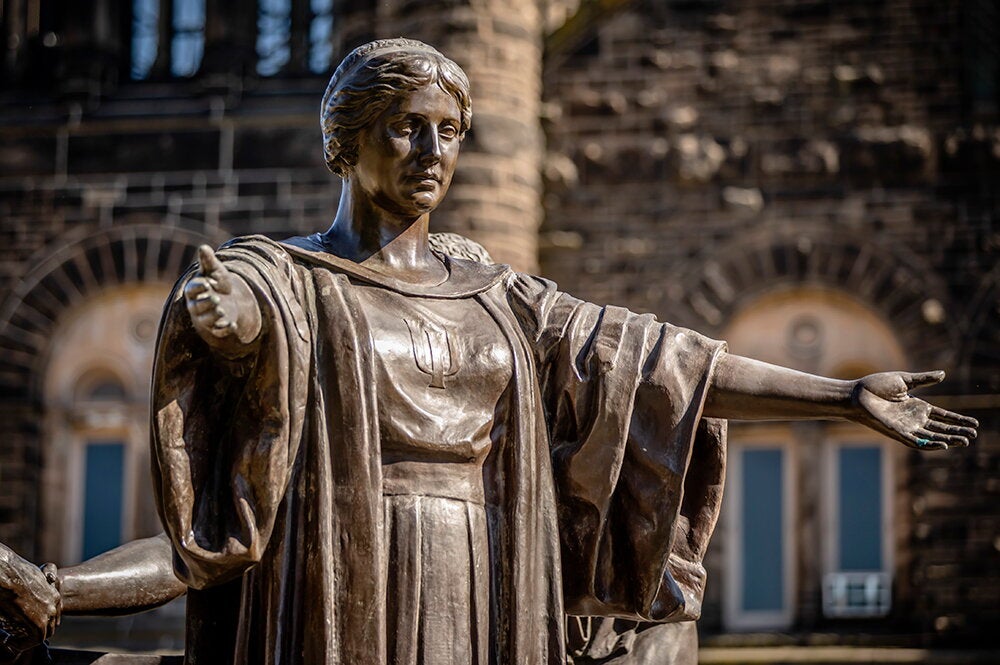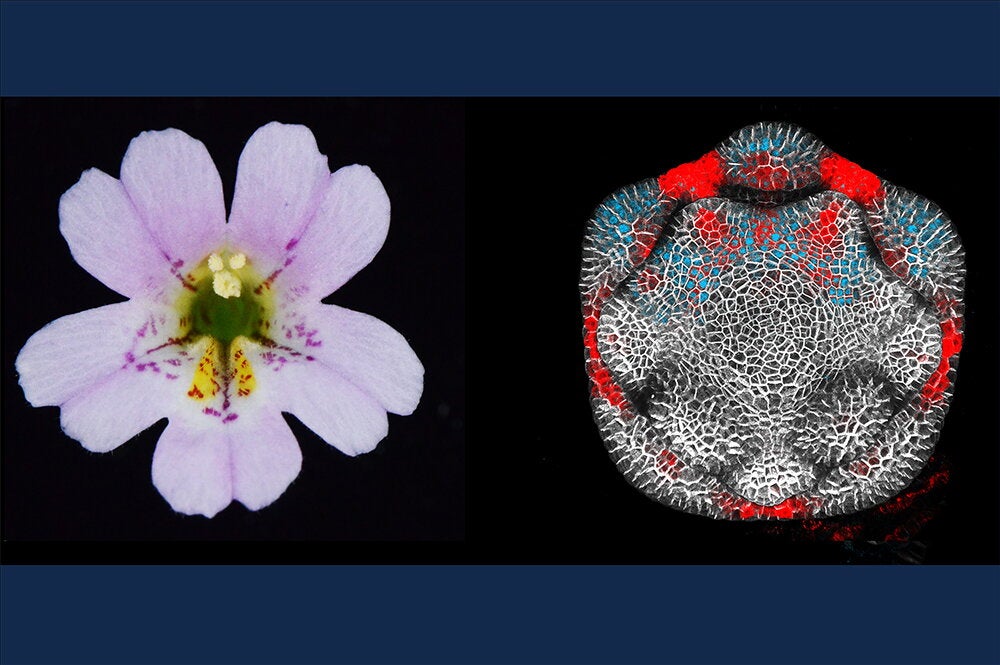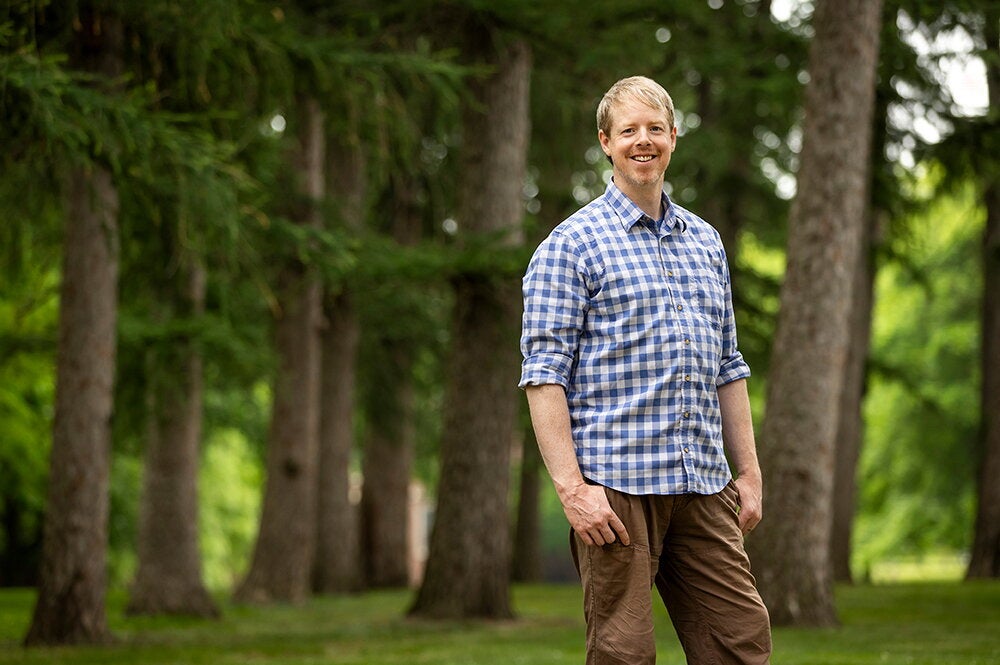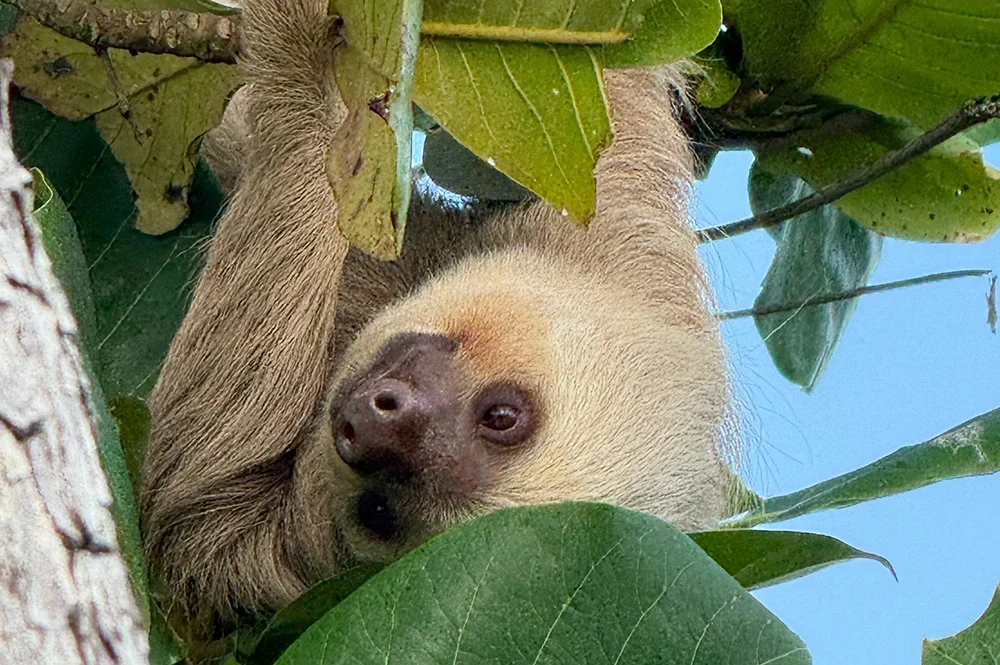
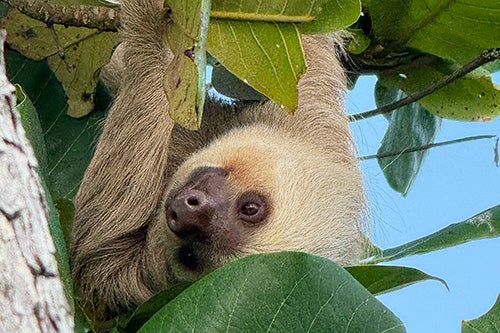
There’s a lot to talk about after a study abroad trip in Panama, but for plant biology professor Jim Dalling, one of the most memorable experiences is riding on a construction crane 50 meters above the forest floor. Gliding across the surface of the forest canopy, they’re inches away from a hidden world of flying tropical birds, sun basking iguanas, swirling butterflies, jumping monkeys, and blooming plants.
Every January, Dalling and research scientist Astrid Ferrer take 15 students on an 11-day Panamanian adventure crossing the country to learn about the ecology and conservation of lowland and montane cloud forests and their birds, bats, fungi and amphibians. For three years Dalling and Ferrer have collaboratively taught the tropical forest ecology in Panama section of Integrative Biology 496 (IB 496).
The course is one of two IB 496 sections, with the other course going to Belize to study the natural history of coral reefs, taught by Chris Taylor, and adjunct lecturer in the School of Integrative Biology.
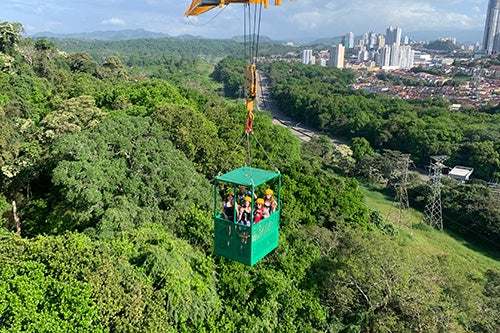
The course also sponsors one Panamanian student studying at a local public university, strengthening the dimension of cultural exchange to the course.
The course is close to Dalling and Ferrer’s hearts as they have been working in Panama since 1994 when they were fellows at the Smithsonian Tropical Research Institute at the Barro Colorado Island Station. Dalling continues to spend 3-4 months each year in Panama as a research associate at the Smithsonian Tropical Research Institute (STRI). Ferrer also has continued to expand her research in Panama. She currently works on a project examining the relationship between the Tachigali, a legume tree, and Amauroderma, a fungus that associates with the tree’s roots.
Dalling and Ferrer take their students on a personalized journey through their own research sites and give them a multifaceted and multicultural experience. The trip is supported by the STRI, which provides students with accommodation and access to research sites that are not available to the public.
“My students get to meet my whole research crew, including my Panamanian collaborators,” Dalling said. “I have really enjoyed vicariously the student's enjoyment, their excitement of being there for the first time.”
One of the cornerstones of the course is its tight knit nature and the emphasis on becoming a close group of likeminded explorers. Before the trip to Panama, students explore Panama in the classroom through in-class research assignments.
Natalie Monroe, a master’s student in integrative biology, took the class in January of 2023 and particularly enjoyed the integration of cultural exploration and ecological research. She described the unique opportunities to see her research interests come to life.
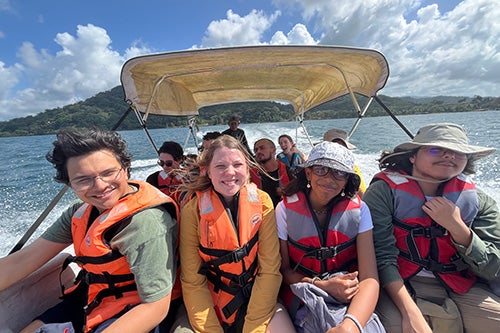
“I researched coatis during the class, which are related to raccoons. On our first day there, we ran into a band of coatis, and it was so cool to see the animal I had researched in front of my eyes,” Monroe said. “There were so many other organisms that I had no idea existed before the course, and I was then able to see and identify them on the trip.”
Students can pick something specific to Panama to study during their time in the course whether it be a scent that attracts bees or a particular species of bird or plant. Each student is encouraged to engage in their own specific interests and help educate their fellow classmates about them.
Jessamine Britt, a senior studying Integrative Biology, described the course as life-changing. She recalled the lasting connections she made with both Dalling and Ferrer as well as the immersive cultural experiences she will never forget. Fondly, she speaks of the instructors on a first-name basis.
With the trip being on a tight 11-day schedule, students get to experience ecology research, cultural diversity, and physical activities like hiking. Panama is close to the size of Iowa but is immensely diverse and the course dedicates its travel itinerary to giving the students a multifaceted view of the country.
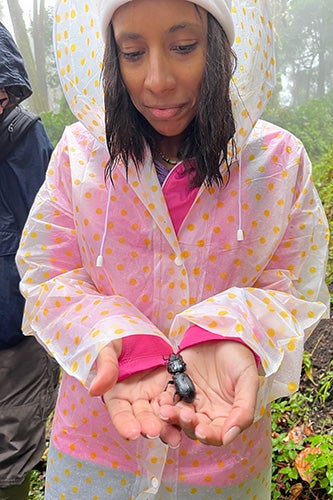
Students visit Barro Colorado Island, the most famous tropical research station in the world, a plantation selling some of the world’s most expensive coffee, and climb a volcano to experience a tropical oak forest. Some 90% of students rank the class as a 5/5 on anonymous course evaluations.
When Britt’s class went on their abroad trip, they were immediately thrown into cultural immersion as by coincidence they arrived during a local festival, featuring vendors selling handmade goods and local musicians playing throughout the evening.
Monroe said that every day was a new adventure.
“After a long day out in the forest we would always come back and play games, walk to the corner store to get some fresh coconuts, or convince Jim and Astrid to take us swimming in the river or at a beach,” she said.
Getting to meet locals, from people enjoying the beaches to a coffee plant owner in the mountains, allows students to understand the culture of Panama. The essence of the course, participants said, is combining academics with the joy of on-site research.
“Jim and Astrid are so adventurous and nice. I was so impressed, amazed, and appreciative of the opportunity I had to let them be in their element and be a sponge,” Britt explained. “It was nice to soak up everything they wanted to tell me. It was such a special experience.”
Editor’s note: Students looking for financial information for study abroad can explore the School of Integrative Biology undergraduate awards page.
